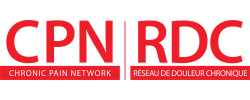| Return |
Patient Evidence Summary

Doctor, is Peripheral Nerve Stimultation helpful for treating chronic neuropathic pain?
Peripheral nerve stimulation is effective for reducing chronic neuropathic pain for some people who have not responded to other treatments.
What is the evidence?
SUMMARY OF FINDINGS
Peripheral nerve stimulation versus placebo or another treatment for chronic neuropathic pain that has not responded to other treatments
Condition treated with Peripheral Nerve Stimulation | Number of Randomized Controlled Trials | Level of Evidence |
|---|---|---|
| Migraine headaches | 5 studies | Strong |
| Neuropathic low back pain | 3 studies | Strong |
| Cluster headache | 1 study | Moderate |
| Poststroke shoulder pain | 1 study | Moderate |
| Neuropathic pain in trunk or arms or legs | 1 study | Moderate |
| Neuropathic pelvic pain | 3 studies | Fair |
What kind of study was this?
This was a systematic review of 14 studies published up to 2018.
Who? The studies included 876 people who had chronic intractable neuropathic pain in the head (migraines or cluster headaches), shoulder (following stroke), low back, pelvis or trunk or arms or legs. Intractable pain was defined as pain that had not responded to other treatments or other treatments had caused intolerable side effects the patient could not tolerate.
What? The studies compared peripheral stimulation with usual care or sham stimulation for at least 2 months.
Peripheral Nerve Stimulation | vs | Usual care or sham stimulation |
|---|---|---|
Peripheral Nerve Stimulation: electrode inserted under the skin next to a nerve that is connected to a device (peripheral nerve stimulator) that sends a small electrical pulse directly to the nerve or to a field around the nerve | Sham stimulation: electrode inserted under the skin next to a nerve that is connected to a peripheral nerve stimulator that has not been programmed to deliver electrical pulses Usual care: physiotherapy, medications |
Why was this research done?
Neuropathic pain is sometimes described as shooting pain or burning pain or a sensation of electrical shock. It is caused by injury or dysfunction of nerves within the central nervous system (brain or spinal cord) or peripheral nervous system (nerves outside of the brain or spinal cord). There are medications that can be used to treat neuropathic pain, but they don't work well for everyone and side effects can be a problem.
Peripheral nerve stimulators are devices that are attached to small electrodes inserted under the skin next to a nerve. The stimulators are programmed to deliver a small electrical pulse that interrupts the pain cycle. Researchers for this review found evidence that peripheral nerve stimulation relieves pain in people who have not experienced relief from other treatments (quality of evidence ranging from fair to strong depending on the site of the pain). Several of the authors reported that they are advisers for or developers of peripheral nerve stimulation devices so the potential for conflict of interest is a consideration.
This Evidence Summary is based on the following article:
Deer TR, Esposito MF, McRoberts WP, et al. A Systematic Literature Review of Peripheral Nerve Stimulation Therapies for the Treatment of Pain. Pain Med. 2020 Aug 1;21(8):1590-1603. doi: 10.1093/pm/pnaa030. PubMed
Published: Monday, December 7, 2020
Last Updated: Tuesday, July 13, 2021
Please note that the information contained herein is not to be interpreted as an alternative to medical advice from a professional healthcare provider. If you have any questions about any medical matter, you should consult your professional healthcare providers, and should never delay seeking medical advice, disregard medical advice or discontinue medication based on information provided here.
|
This Evidence Summary was printed from the PAIN+ CPN website on 2025/04/01. To view other Evidence Summaries or to register to receive email notifications about new Evidence Summaries, please visit us at https://www.painpluscpn.ca/Articles/EvidenceSummaries |

|






 , McMaster University
, McMaster University